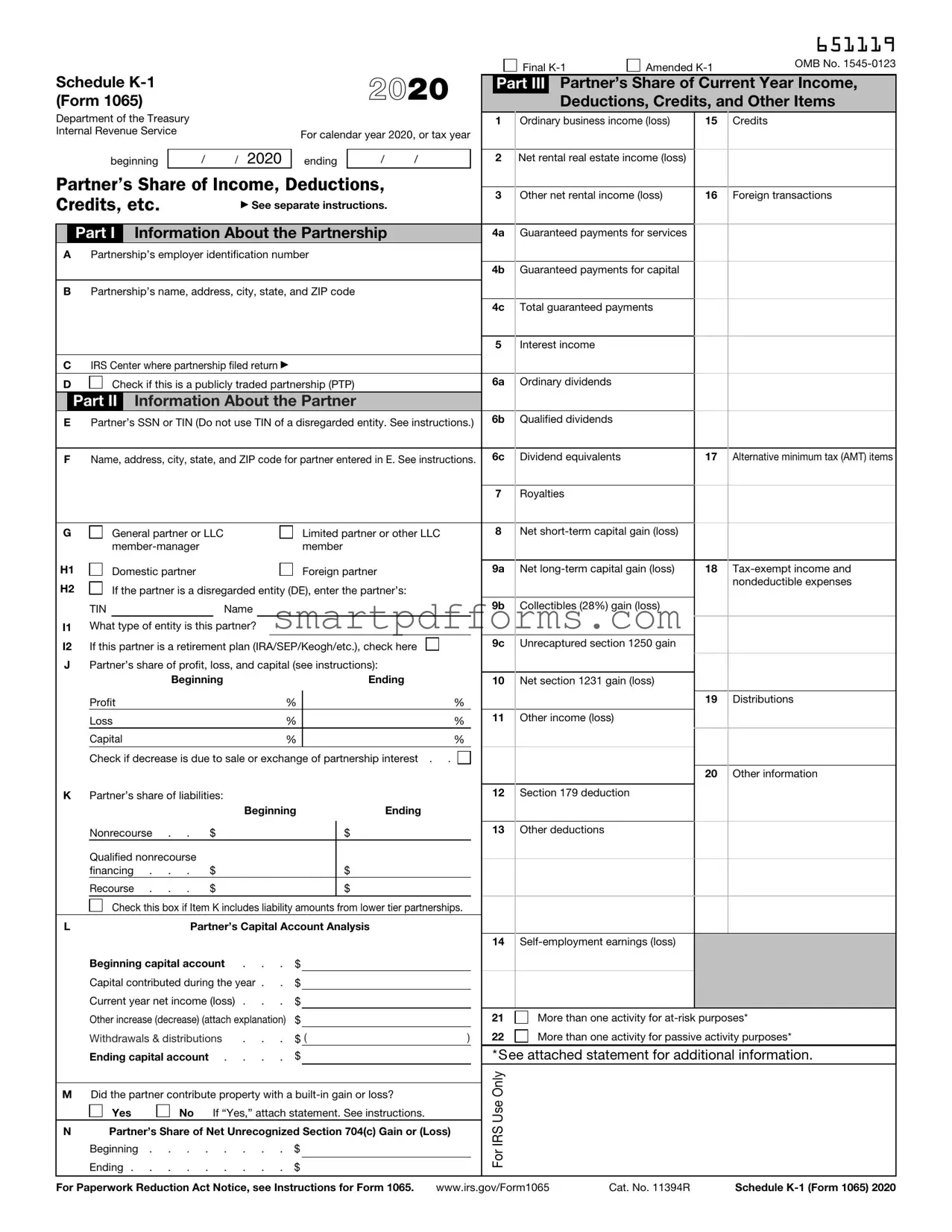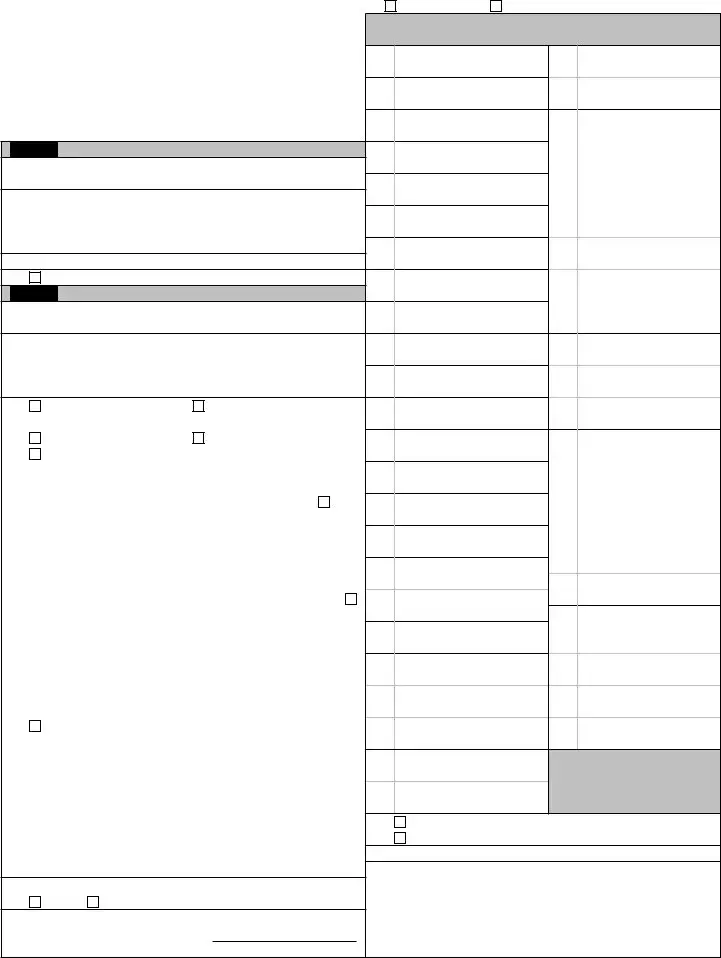Schedule K-1 |
|
|
|
2020 |
(Form 1065) |
|
|
|
Department of the Treasury |
|
|
|
|
|
Internal Revenue Service |
|
|
For calendar year 2020, or tax year |
|
|
|
|
|
|
|
ending |
|
|
beginning |
|
/ |
/ 2020 |
/ |
/ |
Partner’s Share of Income, Deductions, Credits, etc.
Part I Information About the Partnership
APartnership’s employer identification number
BPartnership’s name, address, city, state, and ZIP code
CIRS Center where partnership filed return ▶
D |
Check if this is a publicly traded partnership (PTP) |
Part II Information About the Partner
EPartner’s SSN or TIN (Do not use TIN of a disregarded entity. See instructions.)
FName, address, city, state, and ZIP code for partner entered in E. See instructions.
G |
General partner or LLC |
Limited partner or other LLC |
|
member-manager |
member |
H1 |
Domestic partner |
Foreign partner |
H2 |
If the partner is a disregarded entity (DE), enter the partner’s: |
|
|
|
|
|
|
|
TIN |
|
Name |
|
I1 |
What type of entity is this partner? |
|
I2 |
If this partner is a retirement plan (IRA/SEP/Keogh/etc.), check here |
JPartner’s share of profit, loss, and capital (see instructions):
Beginning |
|
Ending |
|
Profit |
% |
|
% |
|
Loss |
% |
|
% |
Capital |
% |
|
% |
Check if decrease is due to sale or exchange of partnership interest . . |
|
KPartner’s share of liabilities:
|
|
|
Beginning |
Ending |
|
|
Nonrecourse . . |
$ |
|
|
|
|
|
|
|
|
|
$ |
|
|
|
Qualified nonrecourse |
|
|
|
|
|
|
|
financing . . . |
$ |
|
|
|
$ |
|
|
|
Recourse . . . |
$ |
|
|
|
$ |
|
|
|
Check this box if Item K includes liability amounts from lower tier partnerships. |
|
L |
Partner’s Capital Account Analysis |
|
|
|
Beginning capital account . . . |
$ |
|
|
|
|
|
Capital contributed during the year . . |
$ |
|
|
|
|
|
Current year net income (loss) . . . |
$ |
|
|
|
|
|
Other increase (decrease) (attach explanation) |
$ |
|
|
|
|
|
Withdrawals & distributions |
. . . |
$ ( |
|
) |
|
|
Ending capital account . . . . |
$ |
|
|
|
|
MDid the partner contribute property with a built-in gain or loss?
Yes |
No If “Yes,” attach statement. See instructions. |
NPartner’s Share of Net Unrecognized Section 704(c) Gain or (Loss) Beginning . . . . . . . . $
Ending . . . . . . . . . $
651119
|
|
|
|
|
Final K-1 |
Amended K-1 |
OMB No. 1545-0123 |
|
Part III |
Partner’s Share of Current Year Income, |
|
Deductions, Credits, and Other Items |
1 Ordinary business income (loss) |
15 Credits |
|
2Net rental real estate income (loss)
3 |
Other net rental income (loss) |
16 Foreign transactions |
4a |
Guaranteed payments for services |
|
|
4b |
Guaranteed payments for capital |
|
|
4c |
Total guaranteed payments |
|
|
5Interest income
6a |
Ordinary dividends |
|
6b |
Qualified dividends |
|
|
6c |
Dividend equivalents |
17 Alternative minimum tax (AMT) items |
7Royalties
8Net short-term capital gain (loss)
9a |
Net long-term capital gain (loss) |
18 |
Tax-exempt income and |
|
|
|
nondeductible expenses |
9b |
Collectibles (28%) gain (loss) |
|
|
9c |
Unrecaptured section 1250 gain |
|
|
|
|
10 |
Net section 1231 gain (loss) |
|
|
|
|
|
|
|
|
|
|
19 |
Distributions |
11Other income (loss)
20 Other information
12Section 179 deduction
13Other deductions
14Self-employment earnings (loss)
21 More than one activity for at-risk purposes*
22 More than one activity for passive activity purposes*
*See attached statement for additional information.
For IRS Use Only

